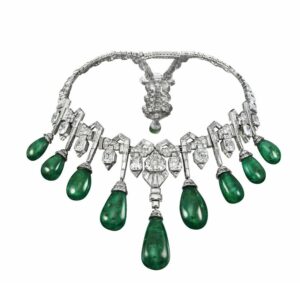
A century ago, our society was experiencing a moment of unbridled euphoria. It is not surprising that the 1920s are defined as the “Roaring Twenties”: this expression perfectly embodies the spirit of that time. The First World War was finally over, and the desire for revenge on the suffering caused by the war brought with it an irrepressible desire for rebirth and a strong passion for life and its pleasures. Joy finally overwhelmed fear and creativity seemed to shine more than ever. Among artistic avant-gardes (such as Cubism, Surrealism and Expressionism), fashion, cinema, jazz music and Charleston, culture flourished again in the post-war period under the banner of liveliness and madness.
The increasingly widespread desire for progress and modernity, considered as “separation from the past and overcoming frivolities”, as Alba Cappellieri writes in her book Gioielli, dall’Art Nouveau al 3D Printing, resulted in a new movement that influenced the entire artistic production of the time, from architecture to fashion and jewelry: Art Déco. It was characterized by a sober, elegant, geometric style, rather distant from the opulence of the Belle Époque. In 1925 the International Exhibition of Modern Decorative and Industrial Arts was held in Paris: this date marked the full maturity of Art Déco, whose name refers precisely to this event. Internationally renowned artists and jewelers such as Van Cleef & Arpels, Cartier, Boucheron, Chaumet, René Lalique, Vever, Fouquet attended the event.
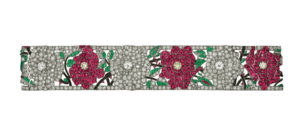
The universe of jewels made by the masters of Art Déco consisted of sophisticated creations with strong color contrasts, in particular among red, white and black colors. The myth of nature and its sinuosity had been replaced by industrialization with the rigid and artificial forms of the city and the skyscrapers: the inspiration from the animal and plant world that had previously characterized Art Nouveau persisted, but took on more severe and geometric forms. An example is the Rose bracelet by Van Cleef & Arpels, which won the Grand Prix at the great event of 1925. The platinum jewel, decorated with roses in rubies, emeralds, onyx, yellow and white diamonds, embodies the taste for linearity and symmetry of Art Déco, even if the floral motif is only subtly stylized. The Maison was inspired by this bracelet for the creation of the homonymous vanity case in platinum, yellow gold, jade, enamel, rubies, yellow sapphires, emeralds and diamonds.
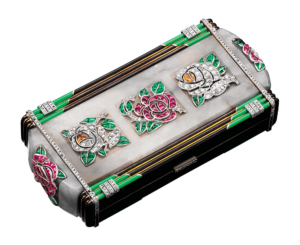
Another strong inspiration was the one for the exotic imaginary. In 1922, the discovery of Tutankhamun’s tomb gave way in Europe to an ever-growing passion for Egyptian art, which was reproduced by goldsmiths through the use of symbols such as scarabs, divinities and sphinxes, and the creation of large and rigid bracelets and necklaces inspired by Egyptian pectorals. But it does not end there: African art was also of great interest and influenced the volumes and shapes of the Art Déco jewelry. The artists of the time were also fascinated by Japan, China, India.
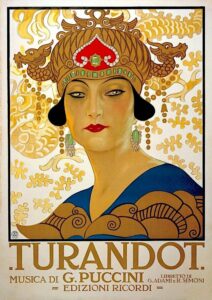
Colorful precious stones expressed the strong love for luxury of those years. But in this period also costume jewelry flourished. In fact, the preciousness of the jewel was not necessarily determined by the value of the materials with which it was made. On the contrary, it was the idea, the creativity of the artist that gave value to the jewel. Personal style also played a fundamental role: the jewel took on a different value according to the bearing of its owner. In this period, fantasy jewels became popular. They were very appreciated by the elite of the time and loved by two great revolutionary women, Elsa Schiaparelli and Coco Chanel, who gave a strong personality to their clothes through whimsical and original bijoux.
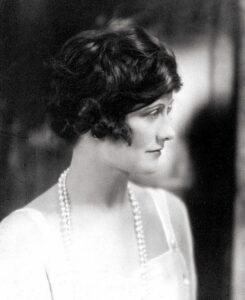
Among the most popular types of jewelry at the time we find the bracelet lanière, a semi-rigid ribbon bracelet, usually worn together with many other bracelets of the same type; the shoulder-length earrings that adorned women with marvelous cascades of light; collerettes and sautoirs. The latter were necklaces with pendants (often a pendant in the shape of a tassel or a pearl), long enough to exceed the waist, which spread together with Charleston. The sautoirs were perfect to enhance the necklines on the back, so loved in the dresses of the 1920s, and could also be wrapped around themselves and be worn as bracelets, or as belts or to adorn the hair.
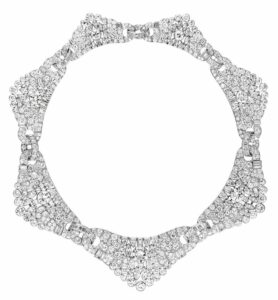
The progress of fashion and jewelry of the 1920s expressed the profound cultural changes of that time, in an increasingly dynamic and modern society. And it represented a new femininity: it was aimed at a strong woman, capable of fighting and making her voice heard, ever closer to freedom and independence. And perhaps it is precisely for this reason that the Art Déco style is still so loved by women, and often reappears in contemporary creations. Because it opened the doors to the future. To a new era. To be lived now.
